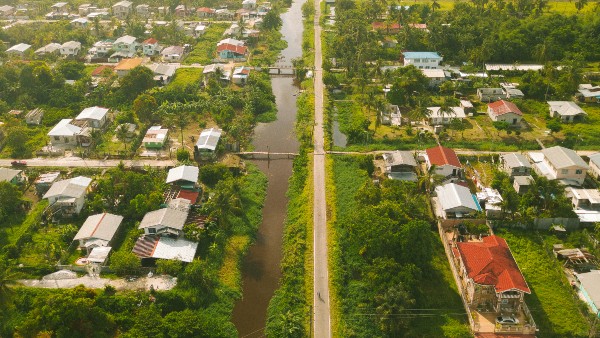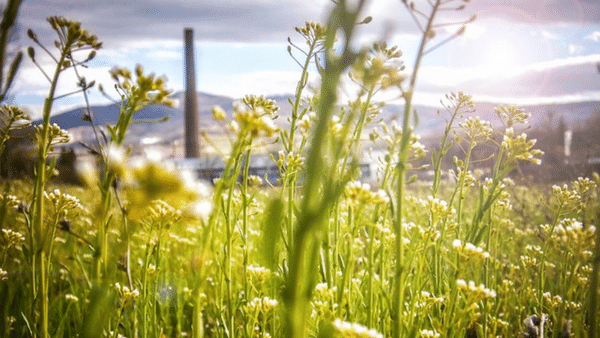The resurgence of green politics in Europe speaks of the increasingly central place of ecological justice in public consciousness
Despite achieving their best-ever result in September’s federal elections, the German Greens nevertheless wanted more. Going into 2021, they were hoping that a Green chancellor would succeed Angela Merkel. Instead they will most likely make up the second-weightiest part of a three-way coalition alongside the Social Democrats and the Liberals. Elsewhere in Europe, green parties are already in power. There are greens in government in Austria, Belgium, Finland, Ireland, Luxembourg, Montenegro, Scotland and Sweden, as well as in many cities and regions. For a political tradition with its roots in protest and opposition, this is new. It speaks to the central place of ecological issues in 21st-century politics.
Europe’s green parties share the common values of ecology, social justice and democracy, but how they position themselves varies, as do their relationships with power. Broadly put, green parties sit on the left of the political spectrum. But green politics is also prepared to look beyond the left–right divide, arguing not that the conflict between capital and labour has gone away, but that it is not the only cleavage shaping modern societies. Some of the larger green parties – most notably in Germany and Finland – have grown thanks to an appeal widened beyond left-wing voters and an openness to working with left and right (though never the far right). Others have entered government through developing ties to social democracy and operating in effective left-wing blocs, as in Sweden. The new Scottish government may also be a step in that direction.
While green politics is most successful in north-western Europe, its influence is not limited to the continent’s more prosperous countries. In central and eastern Europe a growing trend is for greens to rule in capital cities, as in Budapest and Zagreb, or even Prague where the libertarian Pirates hold the mayoralty. It is more marginal in southern Europe. Municipalist movements centred on democratic participation such as that which emerged in Barcelona in the years after the Eurozone crisis stand out as trailblazers.
Green politics is by no means dominant across Europe, but it is established and growing in influence. Whether it is made evident thanks to proportional representation as in Germany and the Netherlands or masked by winner-takes-all politics as in England and France, its presence reflects the shift away from binary politics towards fragmentation, with the electorate split into five or six camps. For younger voters, especially those in cities, green is often the political colour of choice. In the 2021 German elections, 23% of people under 25 voted Green, compared with 7% of people over 70.
Green parties wield real power in a Europe increasingly characterised by patchwork coalitions. At times, the kingmaker role provides outsized influence. But in situations with three or four parties in coalition (or seven as in Belgium), leverage is conditioned by the need for compromise, especially in the context of a strong far right.
The long march through the institutions that green parties set off on in the 1980s always entailed negotiation between radicalism and reformism. Divisions between the more idealistic fundi and the more pragmatic realo wings of the German Greens caused conflicts for decades. The Green primary for the French presidential election held in September 2021 spoke to the same dilemma: play the political game to get things done or seek to transform an unjust, unsustainable status quo. The run-off saw the eco-feminist Sandrine Rousseau pitted against the eventual winner Yannick Jadot in a debate less about policy, more about the strategic purpose of a green in politics.
In an era of pandemics and climate disasters with the role of the state swinging towards intervention, this perennial question may be part of the problem. The 2020s are pivotal for minimising the worst effects of climate change. If radicalism defaults to principled opposition, it scarcely looks justifiable. At the same time, the scale of events that the world is living through implies radical choices, even for a politics of stability and security. This path is the balance that green parties are trying to strike: using their strength to shift the status quo wherever possible without letting up on a truly alternative vision for society. They do so under the watchful eyes of the wider climate movement.
As the world looks towards COP26 in Glasgow, it could seem evident that the time for politics based on ecology has come. Floods in Belgium and Germany, fires throughout southern Europe, energy costs rising out of control, the inherently linked questions of climate, energy and the wider environment are undeniably political. This was always the point for green politics, but now that the moment is here, it brings a new set of risks.
The question of who will pay for the transition is key. Rural areas, workers in fossil fuel industries and people who already struggle to pay the bills will feel the costs more than much of the electorate of green parties. Voters may prefer to turn to social democrats willing to gamble on a slower energy transition despite the real risks of delay, or to liberals who prefer to bet on technology and the market. Far-right parties may well try to funnel legitimate yellow vest-style anger into a wholesale rejection of climate policy.
Facing these risks will require that green parties dispel the rhetorical trade-offs used to discredit their politics since its inception: social justice versus the environment, government regulation versus individual freedom, radicalism tomorrow versus pragmatism today. Dismantling these reductive oppositions will help green parties to grow beyond their current base, as well as into parts of Europe where they are only sparsely represented. If they manage, green parties can be central to European politics for decades to come.
Jamie Kendrick is Editor-in-Chief and Beatrice White Deputy Editor-in-Chief of the Green European Journal
This article first appeared in the RSA Journal Issue 4 2021
Related articles
-
Our yes/no voting system means nothing ever happens
Comment
Peter Emerson
Climate change tells us we must cooperate or die. But where’s the cooperation between political parties? Peter Emerson suggests a radical change.
-
Lessons from the land of many waters
Comment
Alexander Alder-Westlake
In a time of rising sea levels and flooding threats, Alexander Alder-Westlake suggests we draw lessons from a country most of us know nothing about. With its unique geography, topography and history, Guyana has much to teach the rest of the planet.
-
Regenerative organisations: the time is now, the place is here
Blog
Joanna Choukeir
Regenerative organisations are vital to our regenerative future. The time is now for the RSA to emerge as such an institution.




Be the first to write a comment
Comments
Please login to post a comment or reply
Don't have an account? Click here to register.